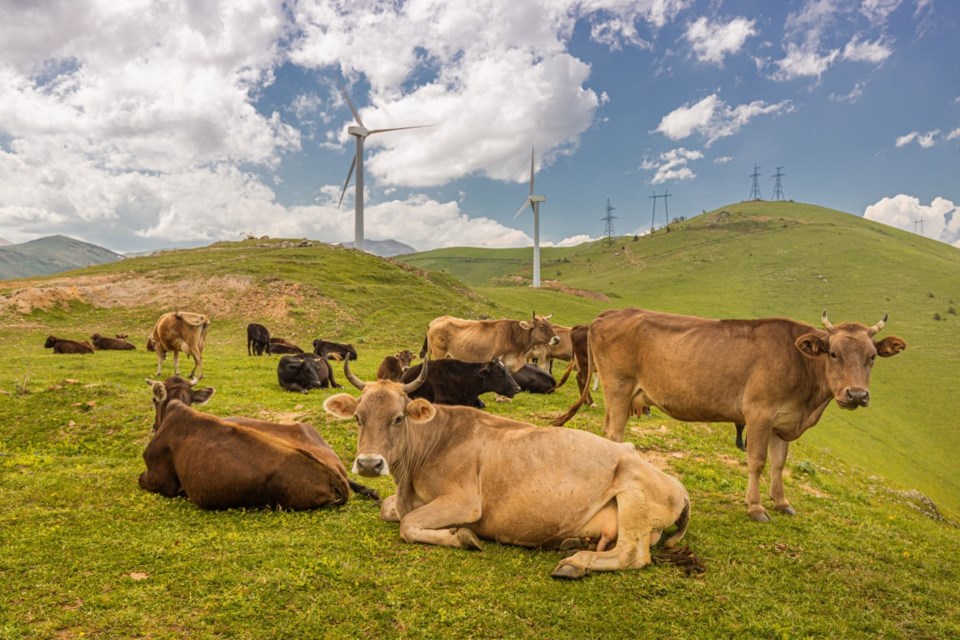WESTERN PRODUCER — Farmers will only engage in a new voluntary federal greenhouse gas offset credit system if they can get a good return on their investment and barriers to participation are lowered, says a researcher.
They likely won’t be taking part simply “for the glowing hot feeling and the fuzziness of doing the right thing, that’s for sure,” said Sven Anders, a professor in agricultural economics and food marketing at the University of Alberta.
The system’s launch was recently announced by federal Minister of Environment and Climate Change Steven Guilbeault.
“First, the arrival of COVID-19, a geopolitical and humanitarian crisis, and now economies are struggling to adjust to the one-two punch of the pandemic supply chain disruption and war. Viewed through the long lens of history, these crises will come and go, but climate change is the crisis that will persist.”
The greenhouse gas offset credit system will allow registered participants to generate one tradeable offset credit for each tonne of emissions they reduce or remove from the atmosphere, Guilbeault said.
“Once a credit is earned, it can be sold to others to help them meet their compliance obligations or emission reduction goals. This system gives foresters, farmers, Indigenous communities, municipalities, and others an opportunity to earn revenues by cutting pollution.”
Although the system is national, it is meant to complement rather than compete with provincial or territorial systems, said Amelie Desmarais, spokesperson for Environment and Climate Change Canada.
"Federal offset protocols do not apply in a jurisdiction that has an offset system with an active protocol for the same project activities,” she said in an email.
Alberta, British Columbia and Quebec have already launched their own offset credit systems, but it wasn’t clear how this would impact participation by farmers in the federal initiative. Alberta’s agricultural conservation cropping protocols for carbon offsets expired at the end of 2021.
The first protocol under the federal system involves landfill methane recovery and destruction. It will provide standards that landfill operators must follow to generate credits.
These include recovering and destroying landfill gases or turning them into energy using technologies such as turbines, engines, flares and boilers. A series of further protocols that include agriculture, forest management and advanced refrigeration are also being developed.
A draft outlining standards for livestock feed management is expected to be published for public consultation later this year, said Desmarais. Although the department is also developing a protocol for enhanced soil organic carbon, its complexity means it will require “extensive research, consultation and engagement with Indigenous groups,” she said.
“It is anticipated that more time will be needed for its development and that a draft will not be published for public consultation before mid-2023.”
Further protocols are also being considered for livestock manure management as well as anaerobic digestion, she said.
Western Canadian farmers have already adopted practices such as no-till agriculture, said Todd Lewis, second vice-president of the Canadian Federation of Agriculture. Although producers see an opportunity to earn money for things such as carbon sequestration in their soils, previous attempts at carbon offset markets have failed, he said.
“So, farmers are, it’s kind of a wait and see right now as to what the (new) protocols are going to be, and a big part of this is always going to be what’s going to happen in the United States as well.”
However, Desmarais said federal regulations published June 8 include provisions aimed at facilitating participation.
“The regulations allow for aggregation of projects, i.e. registration of a group of projects located in the same province that use the same protocol and quantification methodology,” she said.
“Aggregation may help to reduce barriers for smaller projects by streamlining registration, monitoring, reporting and verification processes, and thereby help reduce total costs and increase the economic feasibility of some projects. Further details on its application will be incorporated in applicable projects.”
Anders said one of the problems with such systems is that they have traditionally been aimed at industries consisting of a few large companies, not sectors such as agriculture made up of thousands of farmers and ranchers.
“So, I still wonder about a farmer with a few hundred acres. Would they be able to generate enough of an offset in terms of size or tonnes of CO2 so that they would actually be attractive as a supplier of carbon offsets to a heavy emitter in Canada?”
However, Desmarais said the federal government recognizes “that multiple incentives may be needed to overcome barriers to undertaking offset projects, while maintaining the environmental integrity of the system by ensuring that reductions generated are not double counted in two different systems.”
As a result, the regulations will allow for “complementarity with funding programs, as long as the project proponent retains exclusive entitlement to claim the offset credits for the (greenhouse gas) reductions generated by the project,” she said.

